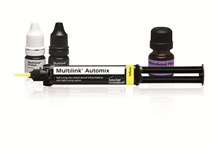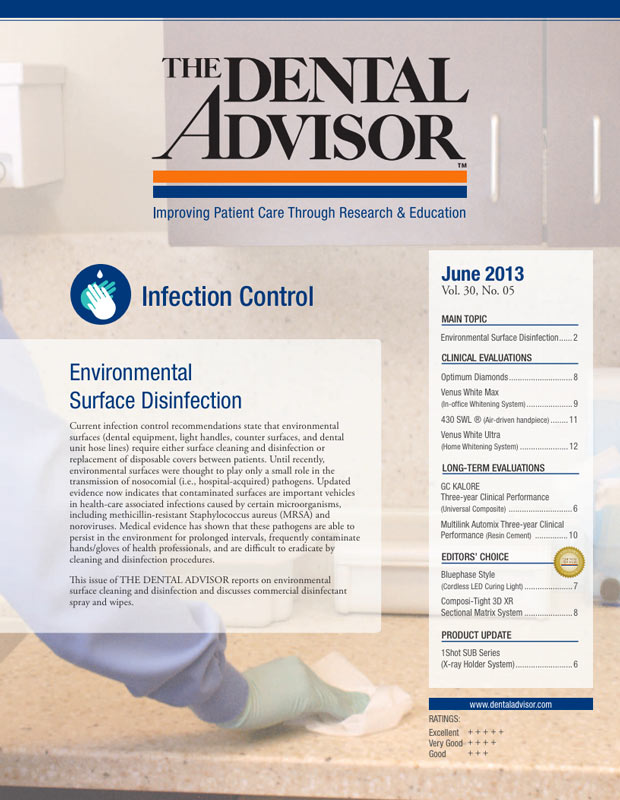Clinical Evaluations
Multilink Automix (3 yr)
Consultants’ Comments
- “The esthetics and color stability in the restorations cemented with Multilink Automix are excellent.”
- “Little marginal discoloration was exhibited during the three years.”
- “Applying the primer during placement was easy and it appears to have enhanced the bond of the cement to the restoration.”
Description
Multilink Automix is a self-cure with optional light cure adhesive resin cement with a self-curing and self-etching primer. Suggested applications for Multilink Automix include cementation of indirect restorations made of metal, metal-ceramic, all-ceramic (zirconia, aluminum oxide, and glass ceramics), and fiber-reinforced composite. The use of a Monobond Plus, a universal restorative primer is recommended to achieve a stronger bond to all types of restorative materials. Multilink Automix is available in four shades with different degrees of translucency: transparent (high translucency), yellow (high translucency), white (medium translucency), and opaque (low translucency). The System Pack includes: 9 g Multilink Automix syringe, Multilink Primer A & B, Monobond Plus, 15 mixing tips, Liquid Strip and accessories. The purpose of this study was to determine the long-term clinical performance of Multilink Automix at three years.
Clinical Evaluation Protocol
Three hundered fifty-six all-ceramic restorations, cemented with Multilink Automix, were recalled at three years. The distribution of restorations is shown in Figure 1. Restorations were placed on 275 molar and 81 premolar teeth (Figure 2). At recall, restorations were evaluated on a 1-5 rating scale: 1 = poor, 2 = fair, 3 = good, 4 = very good, 5 = excellent.
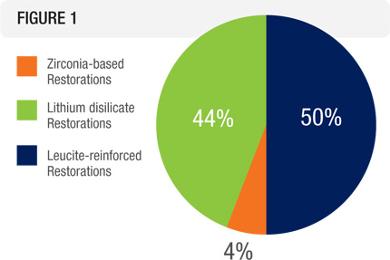
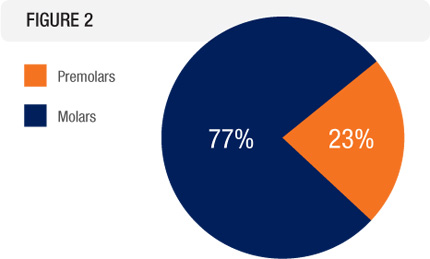
Clinical Observations
Esthetics
Multilink Automix maintained excellent color stability in 100% of restorations placed over the three-year evaluation period (Figure 3), ensuring optimal esthetics of the restoration.
Resistance to Marginal Discoloration
Multilink Automix had minimal evidence of marginal discoloration (Figure 3). Ninety-nine percent of the restorations recalled showed no marginal discoloration. Three (<1%) of 356 restorations recalled at three years will need to be replaced as a result of discoloration.
Lack of Sensitivity
The majority of patients reported no sensitivity (Figure 3). Three patients indicated there was some initial mild sensitivity that resolved within a few months. Five (1.4%) of the 356 teeth recalled at three years had subsequently undergone root canal therapy due to large/deep cavity preparations. The pre-existing condition of these teeth, rather than the cement, seemed to be the reason the root canal therapy was needed. None of these restorations required replacement after endodontic treatment.
Retention
Multilink Automix was used to cement zirconia, lithium disilicate and leucite-reinforced inlays, onlays and crowns in posterior restorations. A low debonding rate was documented over the three-year evaluation period. Only seven (2%) of these restorations debonded, indicating excellent retention (Figure 3).
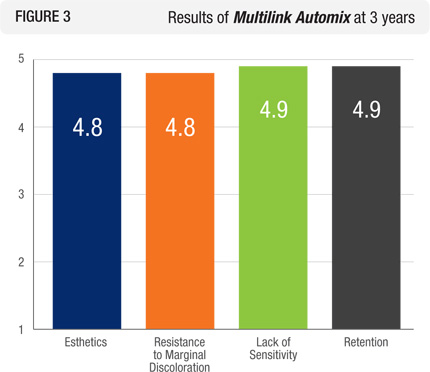
Summary
Three hundred fifty-six all-ceramic restorations, cemented with Multilink Automix, were recalled at three years. It received excellent ratings for esthetics, resistance to marginal discoloration, lack of sensitivity, and retention. Multilink Automix received a 97% clinical performance rating

